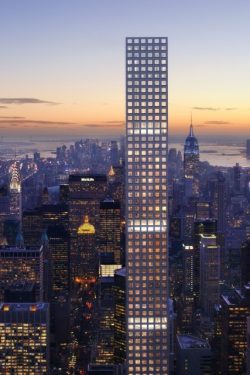SKY HIGH examines the recent proliferation of super-slim, ultra-luxury residential towers on the rise in Manhattan. These pencil-thin buildings-all 50 to 90+ stories-constitute a new type of skyscraper in a city where tall, slender structures have a long history.
Sophisticated engineering and advances in material strengths have made these spindles possible, but it is the excited market for premium Manhattan real estate that is driving both heights and prices skyward, Reported sales seem almost inconceivable: some penthouses in the buildings featured here are in contract for $47 million to $95 million. The rarified geographies of where these projects take shape and the economics of high land costs, high-style design and construction, and stratospheric sales prices are deconstructed. The buildings featured include the super-slender towers of the “57th Street phenomenon”-432 Park Avenue, One57, and the feather-thin 111 West 57th scheme-as well as downtown’s 56 Leonard, the Four Seasons at 30 Park Place, and the planned Tower D in Hudson Yards.
Ultra-luxury is a distinct clientele, to which the towers’ developers direct their branding and marketing psychology. But there is also a “simple math” in the logic of luxury that shapes the design of these projects in every aspect.
Carol Willis
Carol Willis is the founder and director of the Skyscraper Museum and a professor of Urban Studies at Columbia University’s Graduate School of Architecture, Preservation and Planning. She is also the author of Form Follows Financeand co-author of Building the Empire State with Donald Friedman.
